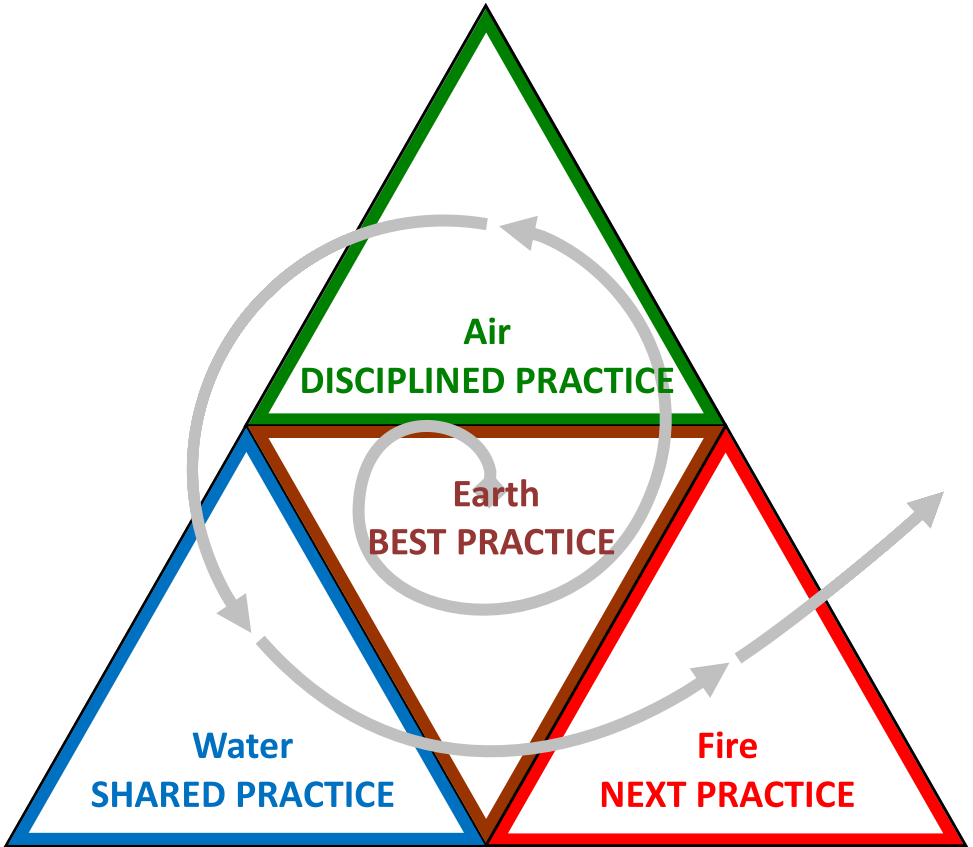Uncertainty Spiral

What level of uncertainty do you operate in? Where is your comfort zone?
EARTH Like climbing a mountain, we can use BEST PRACTICE where following a prescribed process will reliably produce the desired outcome.
AIR Like predicting the weather we can use DISCIPLINED PRACTICE, where understanding the different systems that influence the constantly changing process enables us to predict the outcome with some reliability.
WATER Like fishing on a lake, we can use SHARED PRACTICE and focus on commonly accepted processes because the outcome is seldom reliable.
FIRE Like finding a building on fire with people still inside, we can use NEXT PRACTICE and focus on immediate next-step strategies.
The Uncertainty Spiral by Yoshimi & Jon Brett is marked with CC0 1.0 (OK to copy)
Most planning frameworks assume we know what to do, in general. Up to the Water level of uncertainty we can establish a specific, shared vision of the future and how to get there. However, at the Fire level of uncertainty, there are too many options with unknown outcomes. All we can do is strategise what to do next and closely monitor progress.
Emérgéntly works best as Next Practice, by improving relationships, and creating feedback systems designed to avoid repeating any disasters. Next Practice typically involves rapid prototyping and failing fast before over-committing. If we can tolerate the uncertainty, there is the potential for transformation (order from chaos). As Nobel Laureate, Ilya Prigogene![]() said: uncertainty is a very initial condition for novelty and novelty is our hope.
said: uncertainty is a very initial condition for novelty and novelty is our hope.
NEXT: Eco Ego how to aim for synergy
More on the Functions Spiral More on the Values Spiral
More on the Values Spiral
Complexity Theory
The Emérgéntly Uncertainty Spiral has similarities with Dave Snowden's Cynefin Framework. The video will be fascinating for those interested in complexity theories (more on Youtube).
His more recent "Beyond Cynefin" work takes a similar approach to our Emergence Strategy. ...there's absolutely no point in starting off by saying where we want to be, how do we close the gap? ... so what you do is you start off by saying let's just map where we are and we'll map it a level where we can all agree where we are; and we can all agree what things we want to be able to change; and then we'll see where we go from there...
